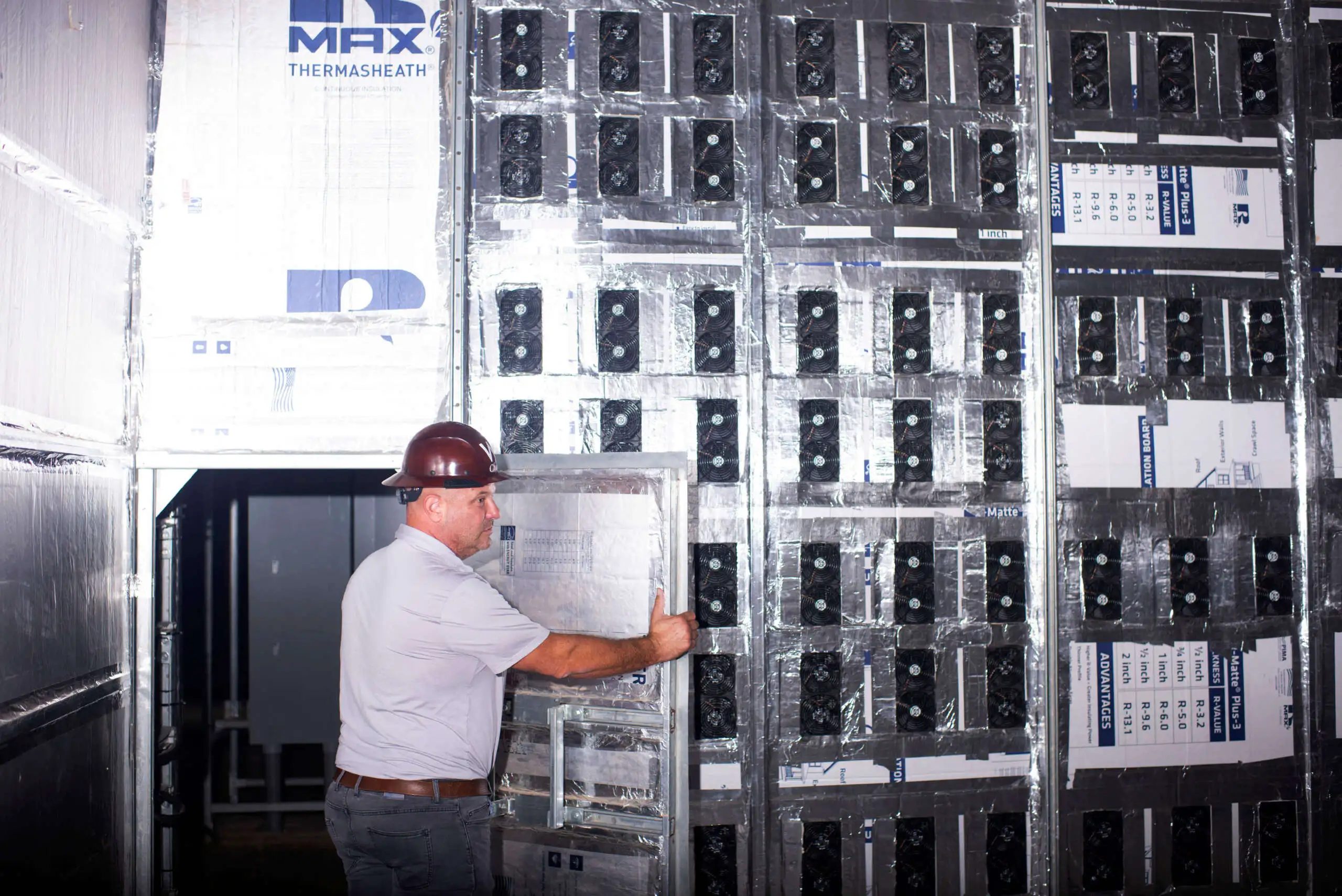In 2021, when China banned bitcoin and other cryptocurrencies, crypto miners flocked to the United States in search of cheap electricity and looser regulations. In a few short years, the U.S.’s share of global crypto mining operations grew from 3.5 percent to 38 percent, forming the world’s largest crypto mining industry.
The impacts of this shift have not gone unnoticed. From New York to Kentucky to Texas, crypto mining warehouses have vastly increased local electricity demand to power their 24/7 computing operations. Their power use has stressed local grids, raised electricity bills for nearby residents, and kept once-defunct fossil fuel plants running. Yet to date, no one knows exactly how much electricity the U.S. crypto mining industry uses.
That’s about to change as federal officials launch the first comprehensive effort to collect data on cryptocurrency mining’s energy use. This week, the U.S. Energy Information Administration, an energy statistics arm of the federal Department of Energy, is requiring 82 commercial crypto miners to report how much energy they’re consuming. It’s the first survey in a new program aiming to shed light on an opaque industry by leveraging the agency’s unique authority to mandate energy use disclosure from large companies.
“This is nonpartisan data that’s collected from the miners themselves that no one else has,” said Mandy DeRoche, deputy managing attorney in the clean energy program at the environmental law nonprofit Earthjustice. “Understanding this data is the first step to understanding what we can do next.”



Yes, and you hit a key component here. The amount of energy required to process transactions in bitcoin remains the same no matter how much it scales (this is algorithmically enforced by the hash difficulty).
One of the problems with banks is that, as their system scales, they have to burn immense amounts of carbon.
If we just scale down tradfi and switch to immutimle block chain ledgers, we would be eliminating the climate damaging effects caused by financial services companies without increasing the energy usage of cryptocurrency like bitcoin
That’s not exactly true though, the energy used will scale with transactions, but it’ll use much less energy per transaction going forward. I’m guessing there’s a lot less duplication of effort with cryptocurrency at scale vs traditional financial services. With proof of stake, the energy requirements go way down.
I’m not saying we should switch overnight or anything, just that it’s not the boogeyman everyone makes it out to be.
No, there is no increase in energy as the number of transactions goes up.
I’m not saying its small. I’m saying it doesn’t go up. There is no relation betwee finding the next block nonce and the number of transactions that are put into the block, as it relates to energy usage.
The more transactions there are, the more demand there is for the currency, thus the more valuable finding the next block is, so more people get involved in mining. From what I understand, that relationship tends to be logarithmic, not linear, so cryptocurrencies should scale better than traditional finance, but that still needs to be proven in practice.
The more people that mine, the more number of zeros are required at the start of the hash (and the less profitable it becomes), so the less people mine.
Again, increasing the number of users or the amount of transactions does not increase the energy usage of bitcoin mining. It does, however, push usage further towards countries with cheap renewable energy like hydro and geothermal.
Increasing the number of transactions/users increases demand for the coin (more buyers), which increases coin value, which increases number of people mining, which increases energy usage.
However, it’s not going to be linear.
That’s not necessarily true. Crypto doesn’t care about renewables, it cares about total cost, and generally speaking, areas with coal and natural gas have cheaper energy than areas with higher percentages of renewables. Another factor is income tax, and areas with renewables tend to have higher tax rates. One clear exception is Washington State due to investment in hydro and no income tax, but that’s just not feasible in most areas.
I don’t have statistics for where crypto is being mined, so I can’t really prove the point. But you can look up energy cost by state and compare to renewable percent, and generally the cheaper energy is in states with less renewable energy.
I’m not against cryptocurrencies or anything, I just think crypto mining is stupid and proof of stake is a much more interesting approach.
Crypto mining is heavily concentrated in areas where there is geothermal (eg Iceland) and adjacent to hydroelectric plants (eg China).
Its true that some mining is done with fossil fuels, but its the minority
Again, increasing the people who are mining decreases the reward for mining, so that pushes other people to shut down their mining operations. Again, the amount of energy does not change as it gets more popular
Do you have a source for this? Because I didn’t find anything with a quick search. I did find some evidence that the US gov is interested in tracking this though.
Yes but unfortunately it’s become paywalled
https://hbr.org/2021/05/how-much-energy-does-bitcoin-actually-consume
I’d be curious about the US study, but mostly if it looks at global trends. The US doesn’t have much geothermal or free (subsidized) hydro, so it may not be a good representation of the global ecosystem.
All studies are going to be best-guesses, but HBR estimated 39-73% of bitcoin mining to be carbon neutral. Even the lower figure is twice the US grid’s percent of renewables.